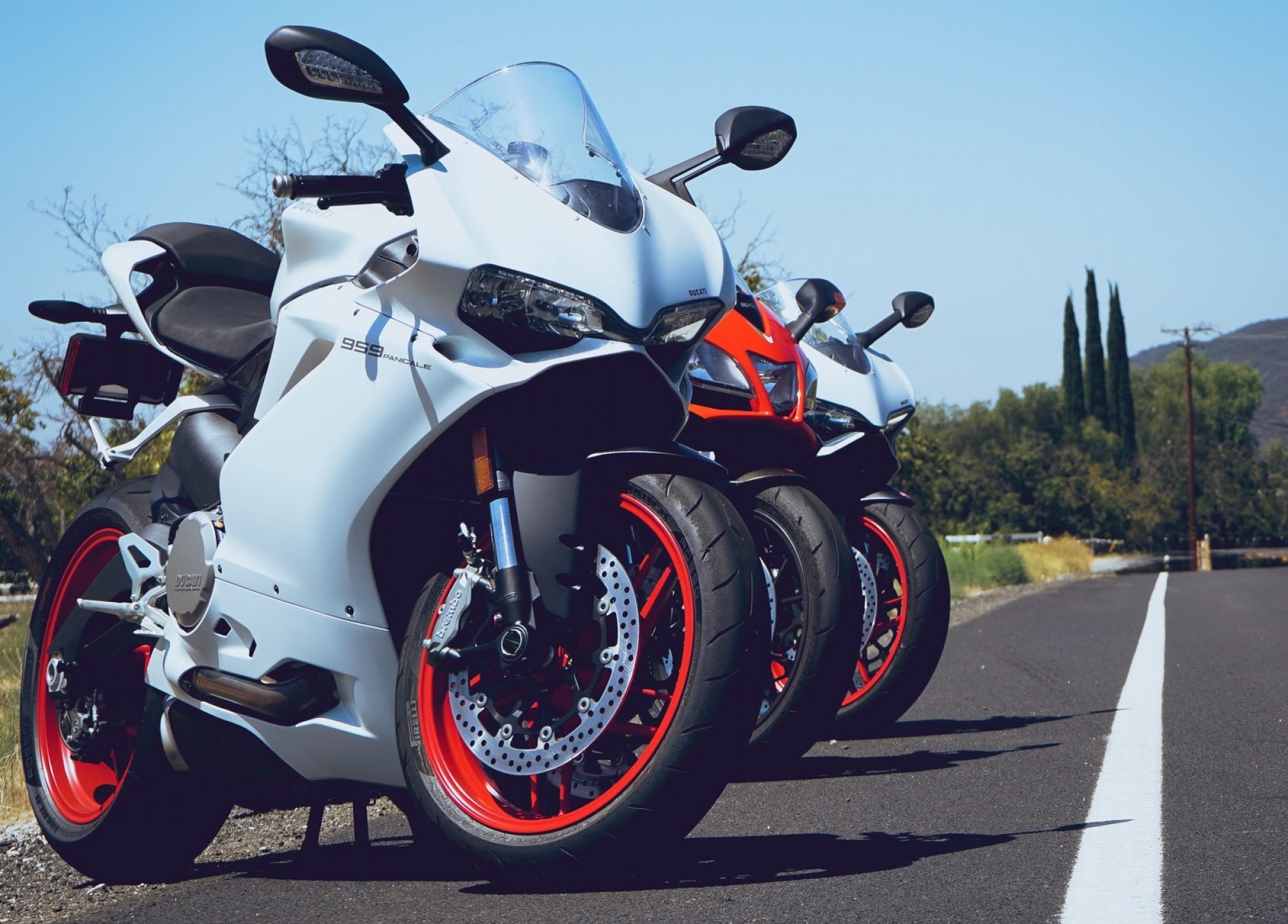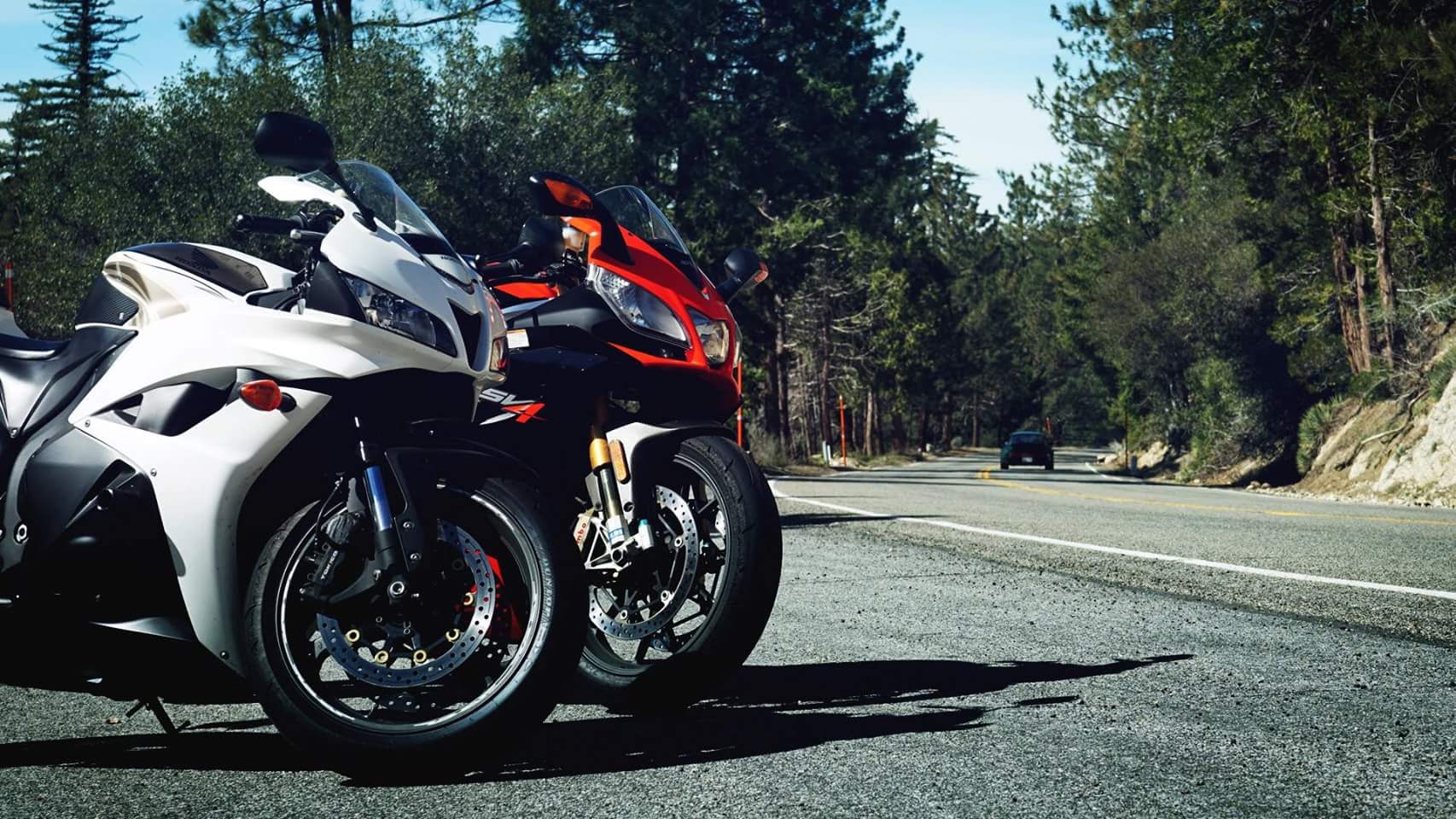Sportbikes can be vastly different from other types of motorcycles, so it’s important to understand their unique characteristics when you’re getting advice from all different angles. Here are some of the FAQ I get from curious beginners.
My buddy has a cruiser and says anything under 1000cc isn’t that powerful and should be safe for beginners. Is this true for sportbikes too?
Absolutely not. A 600cc supersport can go 0-60 MPH in under 3 seconds and leave an 1800cc cruiser in its dust, so anyone dismissing them as “just a 600” doesn’t have a basic understanding of sportbikes (and no, they’re not good for beginners). Engine displacement is not the definitive aspect in a motorcycle’s speed; there are so many other factors like weight, engine configuration / materials, bore and stroke, etc. Cruisers and sportbikes are completely different machines when it comes to engine displacement and speed.
Should I get a 600cc sportbike as my first bike? My friends think it should be fine.
I highly recommend against doing this. Unfortunately this is common advice, especially in circles where anything less gets you labeled a kitty-cat (I’m paraphrasing here). There is nothing beginner-friendly about a 600cc supersport: they’re tall; they’re top heavy; you’re leaned so far forward that it’s hard to look around; the brakes are powerful enough to flip you over frontward if you don’t get an ABS model; the suspension is stiff and unforgiving; they’re difficult to maneuver at slow speed and easy to drop; I could go on for a while here.
Do your best to avoid peer pressure. Get something 500cc or under, learn your craft, then move up to the good stuff. And no, an older 600cc supersport still isn’t a good beginner bike; sometimes they’re even worse because they’re less reliable and don’t have rider aides like ABS.
Here’s a list of sportbikes we do like for beginners.
What’s the difference between a sportbike, superport and superbike?
Sportbike is the generic term used to describe a performance-oriented motorcyle. The terms supersport and superbike are derived from specific racing classifications used around the world:
Supersport:
600cc race bikes (e.g. Yamaha YZF-R6, Suzuki GSX-R600)
Superbike:
1000cc race bikes (e.g. Kawasaki ZX-10R, Yamaha YZF-R1)
There are some nuances to those categories, e.g. Ducati’s Panigale V4 superbikes and Aprilia’s RSV4 are currently around 1100cc, and there are “middleweight” sportbikes like the Ducati Panigale V2 and Suzuki GSX-R750.
Who makes the best sportbikes?
This is like asking your friends who makes the best sports car; there may be drinks and punches thrown depending on which friends you’re asking. The good news though is that there are very clear lines around which bikes are the true sportbikes, so the arguments are generally contained within those lines. This is not a complete list by any means, but these are universally regarded as pure sportbikes:
- Honda: CBR600RR, CBR1000RR
- Kawasaki: Ninja ZX-6R, ZX-10R
- Suzuki: GSX-R600, R750, R1000
- Yamaha: YZF-R6, YZF-R1
- Aprilia: RSV4, RS660
- BMW: S1000RR
- Ducati: Panigale V4, V2
- Triumph: Daytona Moto2 765
There are also endless variants like the KTM SuperDuke (a more upright, super bad-ass naked bike), the Suzuki Hayabusa (think drag racing), the Kawasaki Ninja H2 (insanity) and of course the beginner friendly models we prefer such as the Yamaha YZF-R3 and Kawasaki Ninja 300. Which ones are the best? Good luck with that argument. That said, the Japanese bikes tend to be more reliable and require less maintenance, while the Italian bikes have more quirks but tons of character. Welcome to the beautiful world of sportbikes; you get to choose and ride whatever suits you best.
What’s a Gixxer (pronounced jickser)?
Nickname for a Suzuki GSX-R sportbike.
Which engine type is better: V-twin, inline-4 or V4?
Another fun question that leads to hours of debate. I wrote this article a while back on the subject, because there is quite a difference in riding the different engine types, especially as they get larger.
On a related note, Ducati famously used only two-cylinder engines in the past; e.g. they were allowed to race their 1198cc Panigale R vs. the 1000cc superbikes from all of the other manufacturers in the World Superbike championship. Why? Because Ducati used an L-twin (90 degree, two cylinder) engine, while the others were all using four cylinder engines. A two cylinder engine cannot make as much peak horsepower as a four cylinder engine of the same size, so Ducati was allowed to use a slightly larger engine to compensate for that difference.
What brands and types of gear do sportbike riders wear?
The smart ones wear a full face helmet, riding jacket, riding pants, full length leather gauntlet gloves and protective riding boots without laces (I wrote a full page on this here). The not-so-smart ones are in a t-shirt, sneakers and jeans or shorts, short (or no) gloves, and maybe they’re wearing one of those armor vests because they think it looks cool.
The last time I saw someone crash in front of me, he was going too fast on a mountain road and sent his bike into a ditch. He was wearing cheap gloves and had a badly bloodied hand after a long slide in the asphalt + dirt. Abrasion does terrible things. Imagine how much it would hurt if you just ran full speed and ate it on the pavement with no gear on. Now add 65 MPH to that equation and dress accordingly.
As for brands, these are a few of the more popular ones. There are many other good brands out there, but this is what you’ll typically see when you meet sportbike riders. They’re all relatively good, so it just comes down to fit, price and personal taste.
- Arai (helmets)
- HJC (helmets)
- Scorpion (helmets)
- Shoei (helmets)
- Alpinestars (suits, jackets, pants, boots, gloves)
- Dainese (suits, jackets, pants, boots, gloves)
- Icon (helmets, jackets, pants, gloves)
- AGV (helmets, jackets, pants, gloves)
- Sidi (boots)
The bigger online retailers have a ton of videos and reviews on gear, so they’re a decent resource for picking riding gear.
Can I ride long distances on a sportbike?
It depends on the model. The beginner sportbikes we recommend like the Yamaha YZF-R3 and Kawasaki Ninja 300 are actually tolerable over distance. Their riding positions are a little more comfortable and they get great gas mileage too. By contrast, pure sportbikes aren’t built for distance, so unless you’re Gumby they get quite uncomfortable after a while.
The most I’ve ever ridden in a single day was 400 miles on my old 2005 Yamaha YZF-R6 (relatively comfortable for a supersport); by the end of the ride I was hurting badly and couldn’t wait for it to be over. Now I ride a very fun but even more uncomfortable Aprilia RSV4 Factory, so the most I’ll ride in a single day is maybe 120-150 miles.
Sportbikes are built for performance; the riding position is a very forward-leaning stance with your feet behind you. The first time you ride a sportbike, the base of your palms will hurt for a few days because you’re supporting the weight of your upper body against the bars. Your legs will start to feel sore because they’re in a squat bend the whole time. The tight suspension means you’ll feel all of the bumps and get bounced around.
If you’re looking to do some distance rides but don’t want a big old Goldwing, there are sport touring bikes which are better suited for longer distances, less punishing on the body but still look good and handle well. Examples are the Kawasaki Ninja 1000 and Honda Interceptor (still not appropriate for beginners though, so work your way up to them).
How can I do a track day on my sportbike?
I have a starter guide for you here.
Who makes good tires for sportbikes?
No surprises here; the best tire manufacturers for motorcycles also make great tires for cars. Michelin, Bridgestone, Dunlop and Pirelli are prominent on both road and racetrack.
How do I those use those stands that prop up the rear wheel?
That’s called a rearstand, and you’ll need the appropriate swingarm spools for your bike. You’ll notice that there are 6mm or 8mm holes drilled into the base of the swingarm near the rear axle; this is where you thread in the spools. The rearstand needs to be properly adjusted for the width, then you can prop up the bike on the stand. It takes some practice doing this alone; there’s a danger of dropping your bike if you’re not careful (get a friend to help if needed).
Rearstands are very helpful for cleaning and lubing the chain, something you need to do every 300 miles or so.


